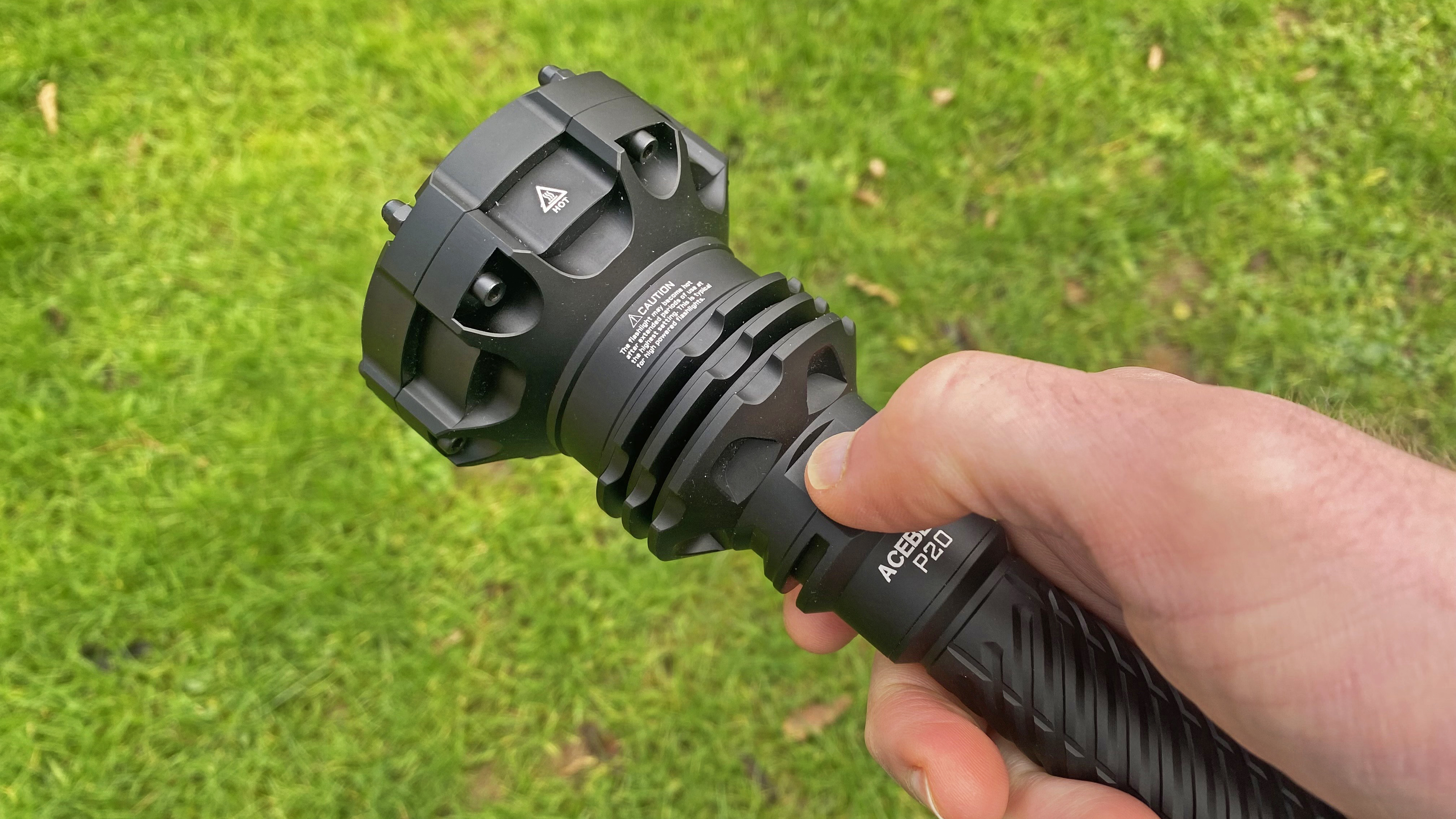
I’ve tested quite a bit of kit from China-based illumination specialists AceBeam in the past and have always found the products to be fantastically well-made and high-performing.
I don’t think the night sky around my house has ever quite recovered from me blasting it with the AceBeam X75, and there is probably a message travelling through space from the squinting population of a planet in a distant galaxy, asking me to please not shine the bloody thing at them ever again.
I’ve also been impressed with the brand’s headlamps, which, while very different in design from classic outdoor models such as the Petzl Swift or the excellent Black Diamond Distance LT, have been up there with the best and most innovative head torches I’ve seen.
Suffice to say, I’ve been looking forward to testing out the P20, which is a lot smaller and half the weight of the X75, and yet boasts a beam that travels even further than its big brother. On paper this flashlight looks like being one of the very best hand torches on the market, but let’s see how it does in the field.
AceBeam P20 review
Price and availability
In the United States, the torch is generally available through a mix of online retailers and specialty flashlight shops, with prices typically ranging from around $100 to $150 USD. Retailers like Amazon, as well as dedicated tactical and outdoor equipment shops, often carry the P20.
In the UK, buyers can expect prices in the vicinity of £80 to £120, with availability primarily through online platforms and specialist retailers catering to outdoor and tactical equipment enthusiasts. In Australia, the torch is typically priced between AUD 150 and AU$200. Head over to Acebeam for more info.
Specifications
- RRP: $199 (US) / £190 (UK) / €183 (EU)
- Weight (including battery): 504g/17.7oz
- Length: 26.75cm/10.53 inches
- Head diameter: 79mm/3.11 inches
- Tube diameter: 25.4mm/1 inches
- Power: High-capacity 21700 battery pack with built-in USBC port (also compatible with 2 X 21700 lithium-ion batteries)
- Brightness: Ultralow (50 lumens), Low (150 lumens), Med1 (470 lumens), Med2 (1100 lumens), High (1800-2300 lumens), Turbo (1800–5500 lumens), Strobe (3000–3600)
- Range: Up to 1280m (1400 yards)
- Modes: 7 (Ultralow, Low, Med1, Med2, High, Turbo, Strobe)
- Run time: 2 hours 40 minutes on High / 74 hours on UltraLow
- Ingress rating: IP68
Design and features

The thin body of the P20 flashlight has a spiral textured grip handle, with an anti-abrasive, corrosion-resistant finish. Just below the head section you will find the thumb-operated side switch. A single press turns the beam on and off, and holding the button down takes you through the four main modes: low, med1, med2 and high. The torch remembers what mode it was on when turned off, and returns to that setting when reactivated. This side switch also lights up when activated, with a colour indicator letting you know how much juice is left in the battery (green for high, red for low).
To use the UltraLow 50-lumen mode (in which mode the battery will last up to three whole days) you hold the side switch down for half a second. At the other end of the spectrum, double-clicking the side switch turns on the Turbo setting, which shoots out a 5500-lumen beam with a range of 1280m. This lasts about 15 seconds, before stepping down to a mid-level beam. To activate the strobe setting, you triple-click the side switch.
Lastly, holding down this side switch for 3 seconds locks the torch, so you can’t accidently turn it on (three flashes let you know the lock is on). To unlock, hold it down for another 3 seconds (two flashes indicates it’s unlocked).
On the base of the torch is a ‘Tactical’ tail switch, which instantly activates the light (regardless of whether the torch is on or off) when pressed. If the torch is already on, and set to high mode, pressing this tail switch bumps the beam up to the Turbo setting.
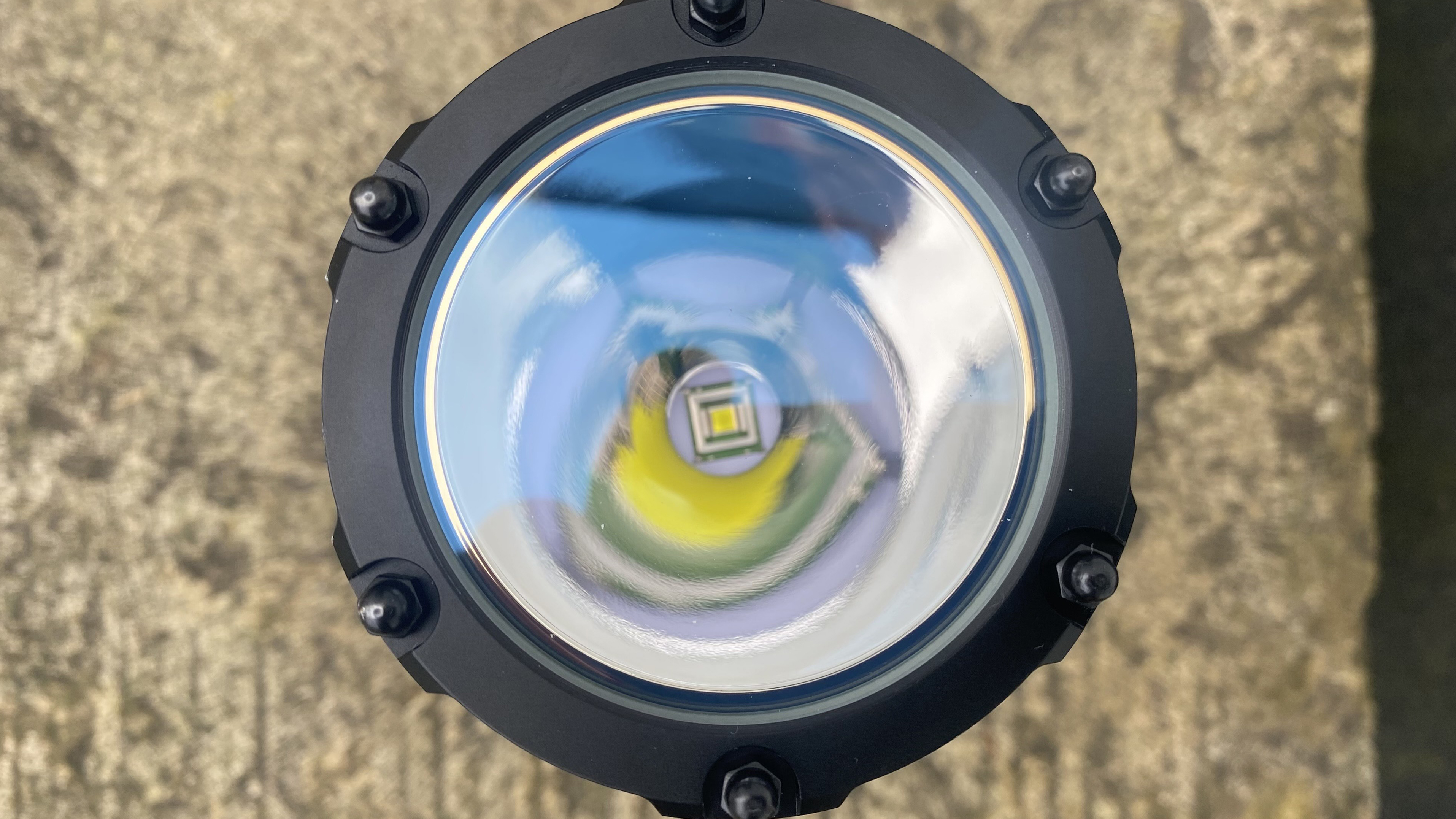
The P20 is built tough, with an ingress rating of IP68, meaning it’s dust-proof and genuinely waterproof (fully submersible to 2 meters / 6.5 feet for up to 30 minutes). It can be bashed around a fair bit, too. Most torches have a standard lens that’s 2mm thick, but the AceBeam P20 boasts a 3mm tempered glass lens for extra strength.
It also comes with a lanyard and a carry/storage bag. There are no colour beam options, but you can opt to have a green filter supplied (for an extra $10), which is easy to attach to the outside of the lens (just like screwing a filter on an SLR camera).
The P20 comes with a 5000mAh 7.4v battery pack (rechargeable via a USBC port), but it can also be powered with two 21700 batteries.
Performance
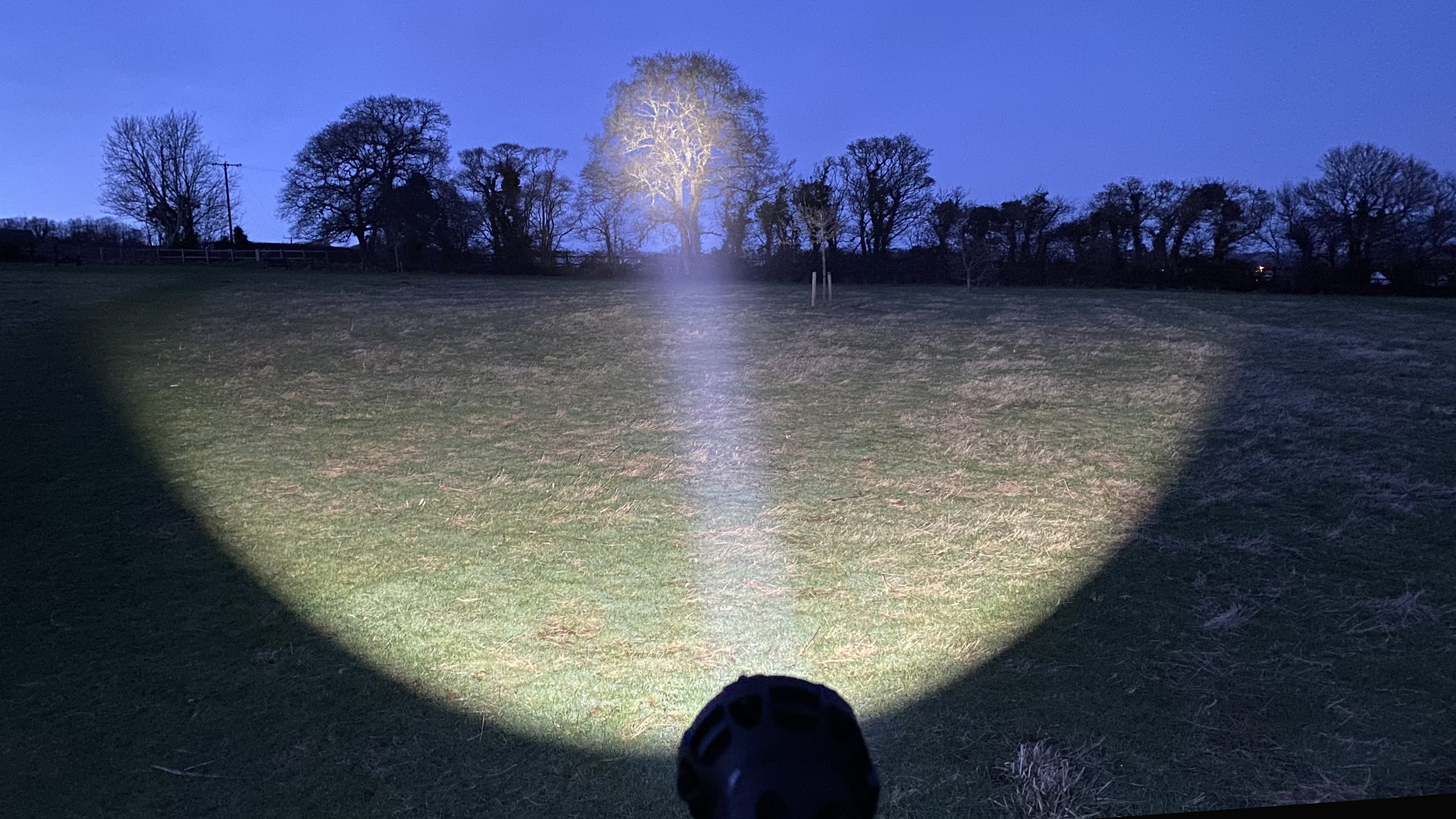
I have been using the AceBeam P20 flashlight in a variety of outdoor scenarios over the last 6 months, ranging from after dark hikes and camping escapades to doing everyday tasks around the garden and using it while out and about in the car at night time.
The first thing to say is that it is a very easy torch to handle: the slimline stem fits nicely in the palm of my hand, and the textured pattern makes it simple to maintain a no-slip grip – even when you’re wearing thick winter gloves. Although the head of the torch is much wider than the handle, the unit is really nicely balanced.
The range of beam strengths is perfect – plenty for every conceivable circumstance, but not so many that things become complicated. It’s very easy to toggle between the modes too, using the side switch.
The Turbo setting is crazy bright, but useful if you want to see across a valley or look out across a moor, or far out to sea (this is a torch aimed at professionals working in fields such as security and rescue, as much as at outdoor enthusiasts, so there are myriad scenarios when having a beam range of over 1km might be useful – even potentially life saving).
The auto step-down function, which dims the beam and prevents you from leaving the torch on Turbo mode, is a good feature, both functionality (so you don’t blaze through your battery power) for safety and (this model doesn’t have a fan, and it can run pretty hot on the maximum setting – I wouldn’t leave it on the floor of a tent on full beam, for example).
At the other end of the scale, the UltraLow mode will give you a little bit of illumination (50 lumens, enough glow to reveal your surroundings and find your way around) for three entire days. In between these extremes are four very useful lighting modes, which are all most people will ever need.
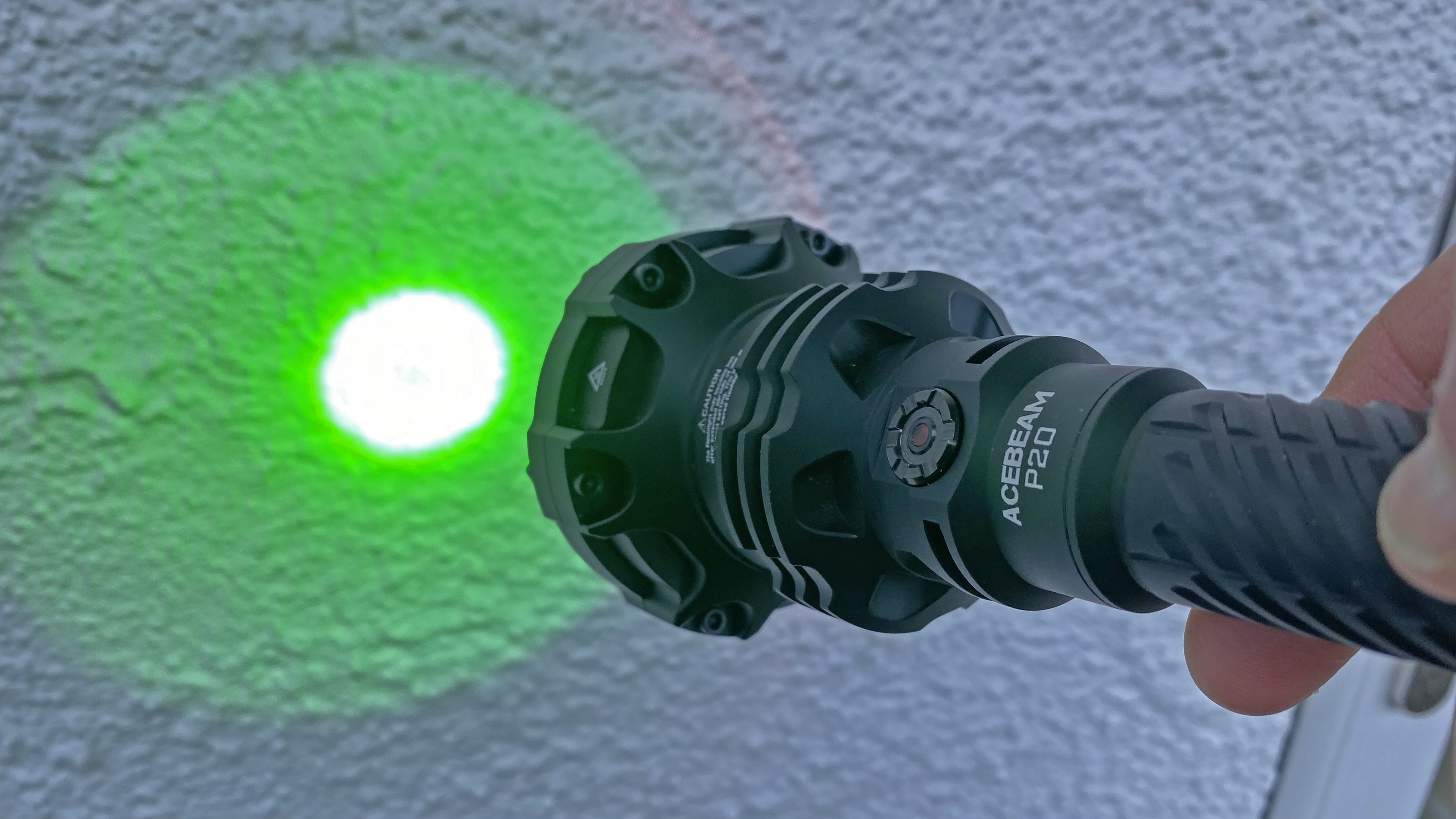
The strobe setting is extremely bright (3000–3600 lumens), which is good for signalling across a large distance, but there is no pre-programmed S.O.S. mode. It’s also a bit of a shame there are no in-built colour settings, which are very useful for lots of things (from reading maps and star gazing without shattering your night vision to considerately observing wildlife and finding your way out of a shared tent or dorm without disturbing everyone else). You can, however, choose to get the green filter for an extra tenner – and that’s the one you need for looking at wildlife. It’s easy to attach the filter, but don’t over tighten it, otherwise it’s a nightmare to get off (as I discovered).
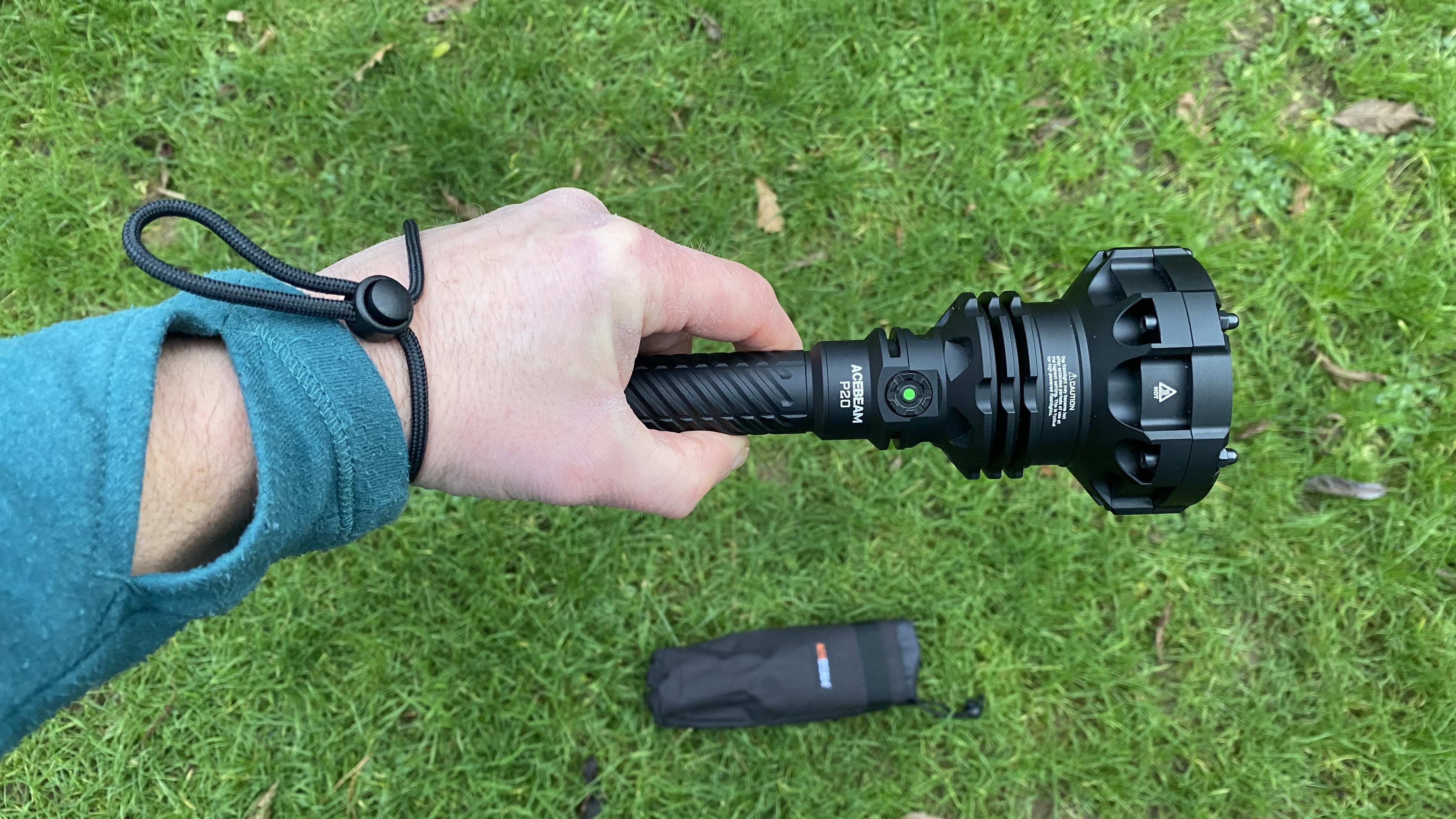
At nearly 27cm long, the P20 is obviously not intended as an everyday carry item, but its slim build and comparatively low weight does mean you can easily slip it into the pocket of a hiking backpack if you prefer a flashlight to a headtorch. Equally, it’s very easy to carry in a vehicle. Unlike some AceBeam lights, though, it doesn’t have a magnetic bottom, and it doesn’t stand up on its own either, so it’s not as easy to position as other models – a drawback if you’re trying to do a task that requires both hands. It can’t really be used as a camping lantern, for the same reason.
The Tactical rear button can be useful for boosting the light or turning the torch on in the pitch black, but it’s easy to activate by mistake, so be sure to lock the torch when it’s not in use (especially if you’re carrying it in a backpack or other bag).
There are a couple of anomalies in the performance. When you activate the light via the Tactical tail switch, you can’t moderate the strength of the beam with the side switch. Also, after bumping the beam from High to Turbo with the Tactical tail switch, the auto step-down doesn’t kick in after 15 seconds, which means you could easily burn through your battery life very quickly (and, as mentioned, it can get hot).
Lastly, while it’s great that the P20 can be powered with batteries (so you can carry back-up during longer trips), it’s not especially easy to buy 21700 batteries in the UK (they’re available online).
Verdict
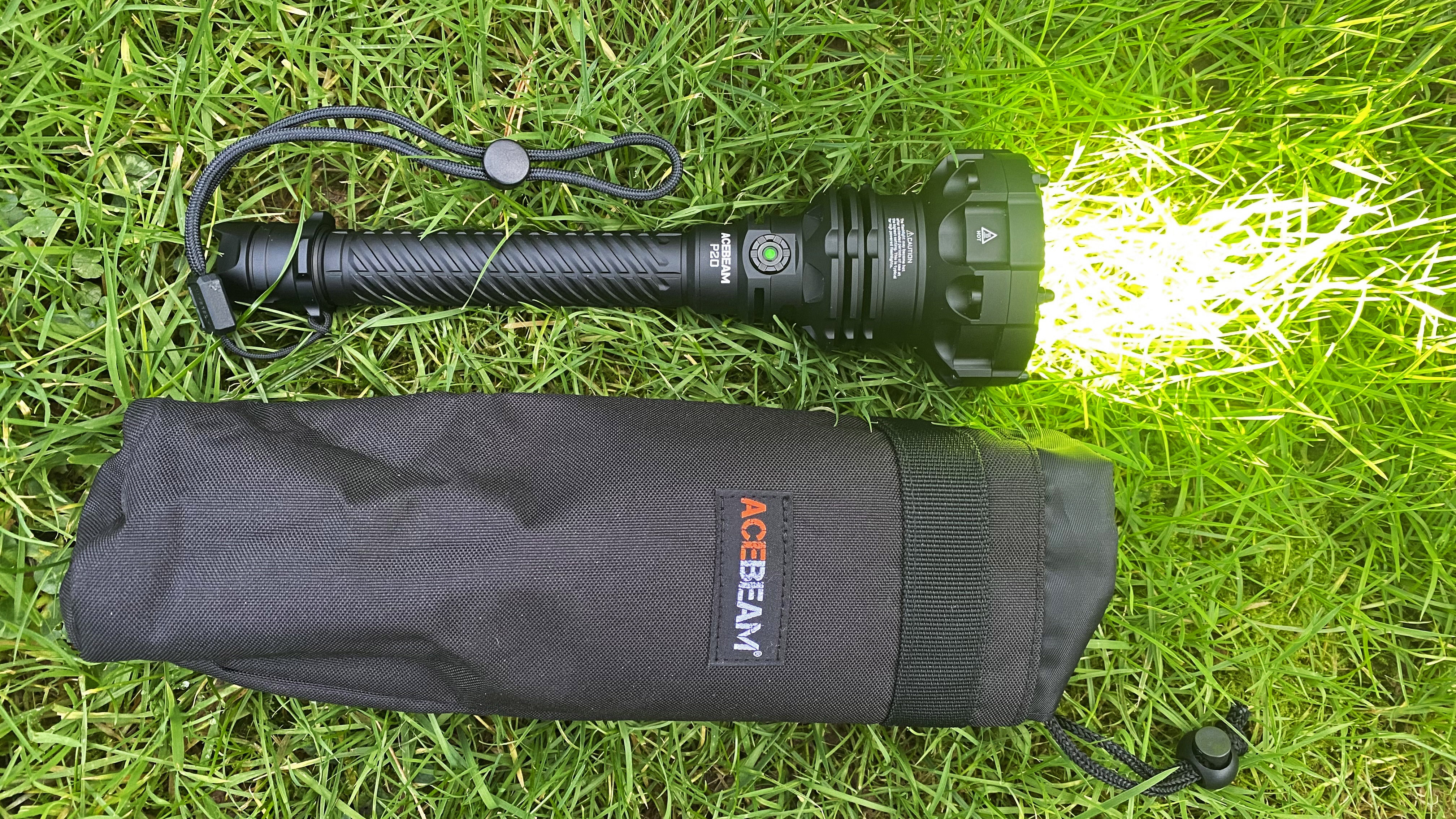
Easy and comfortable to carry, simple to operate, and extraordinarily powerful, the AceBeam P20 is a very good choice of flashlight for people happy to have their light source in their hand rather than on their head. This low-weight light sabre throws a big beam a very long way – well over a kilometre – but it can be a more elegant weapon against the powerful dark side as well, with a range of more subtle settings. The battery life is every bit as impressive as the range, and it’s hard as nails – able to withstand both bashings and soakings if need be.
Some alternatives to consider
For a chunkier handheld flashlight, which is heavier to carry but much easier to position than the P20, check out the bazooka-like AceBeam X75.
If you’re into Everyday Carry, however, and you’re looking for something smaller, the Olight Baton 4 is a brilliant and very classy little torch – a proper pocket rocket.







